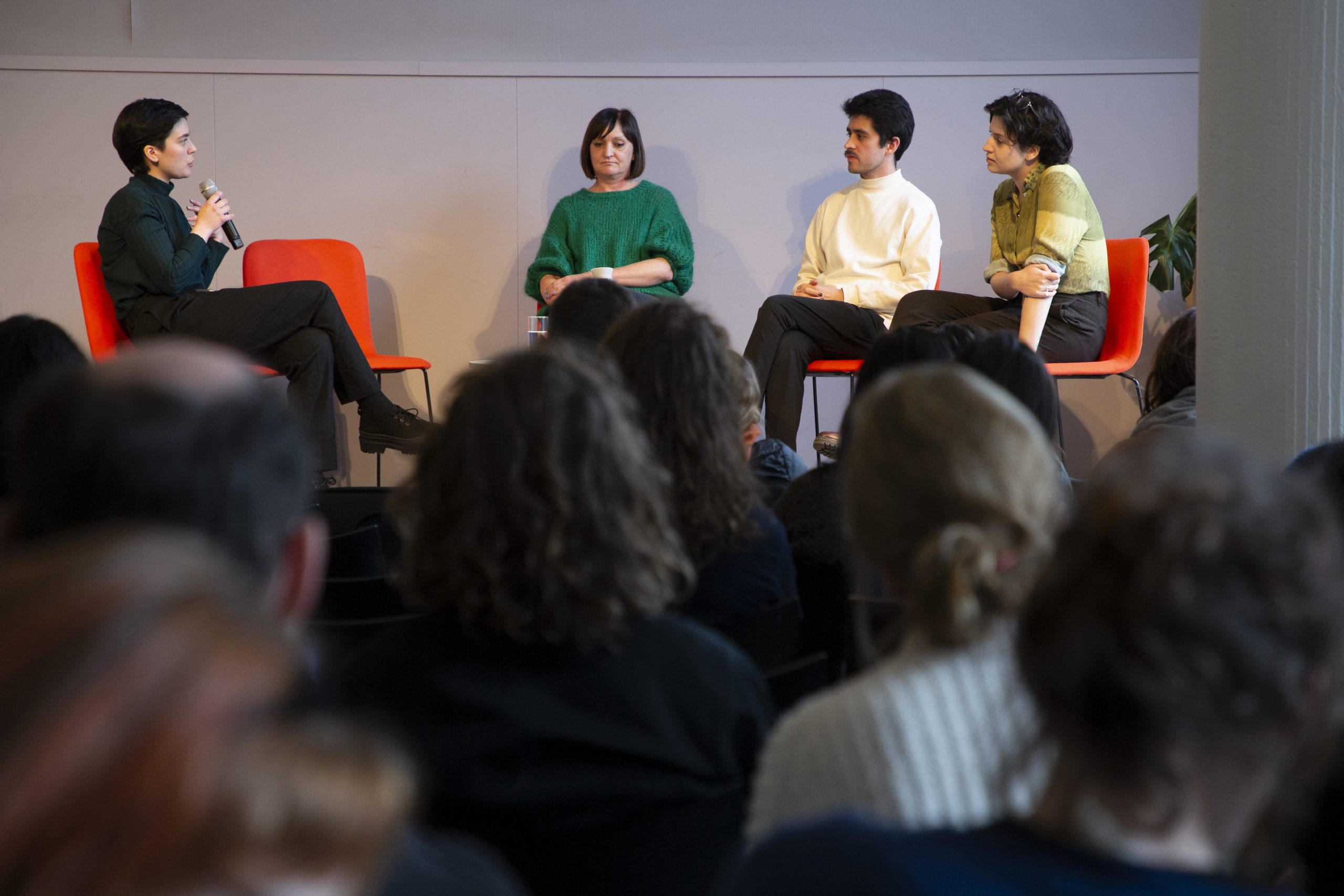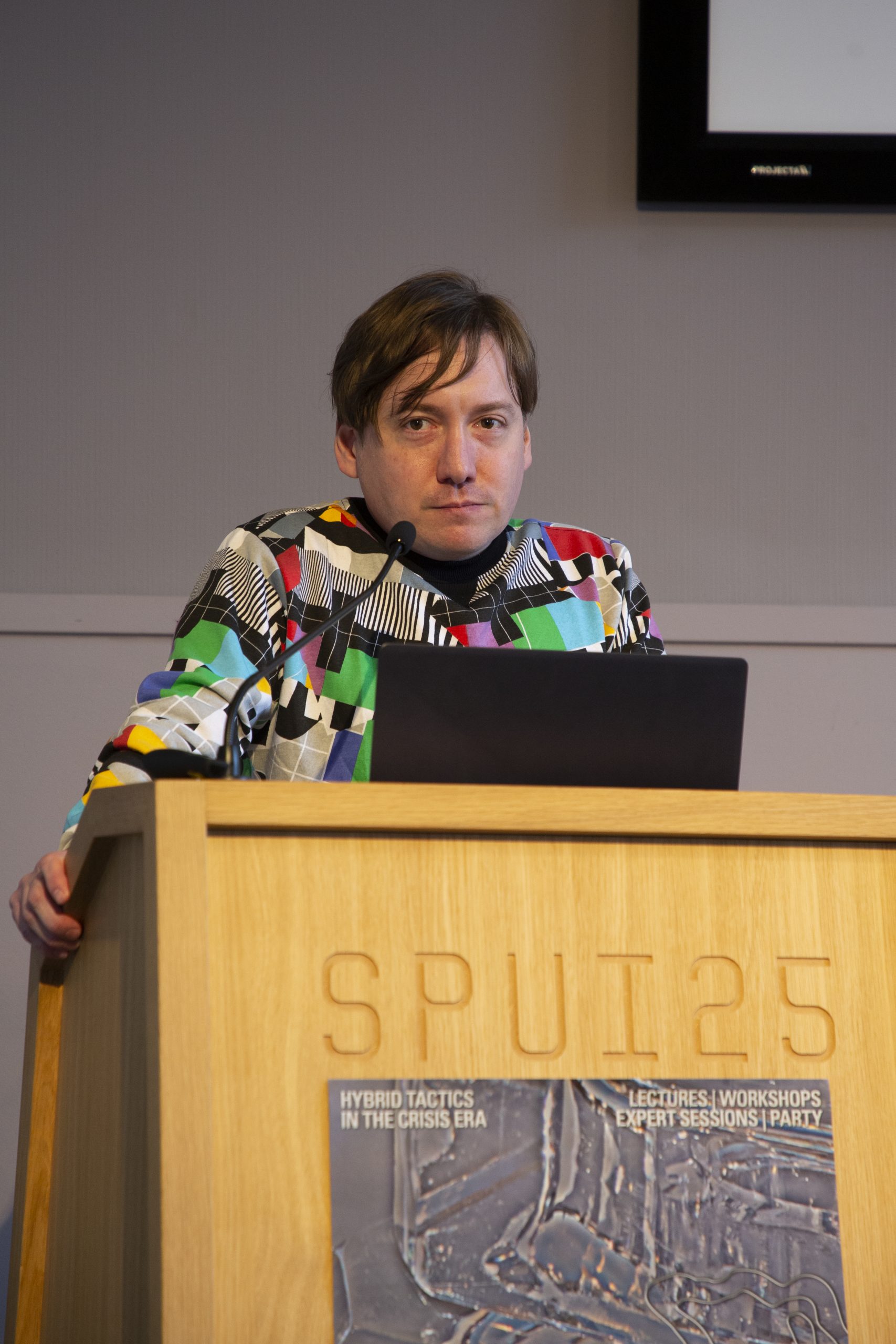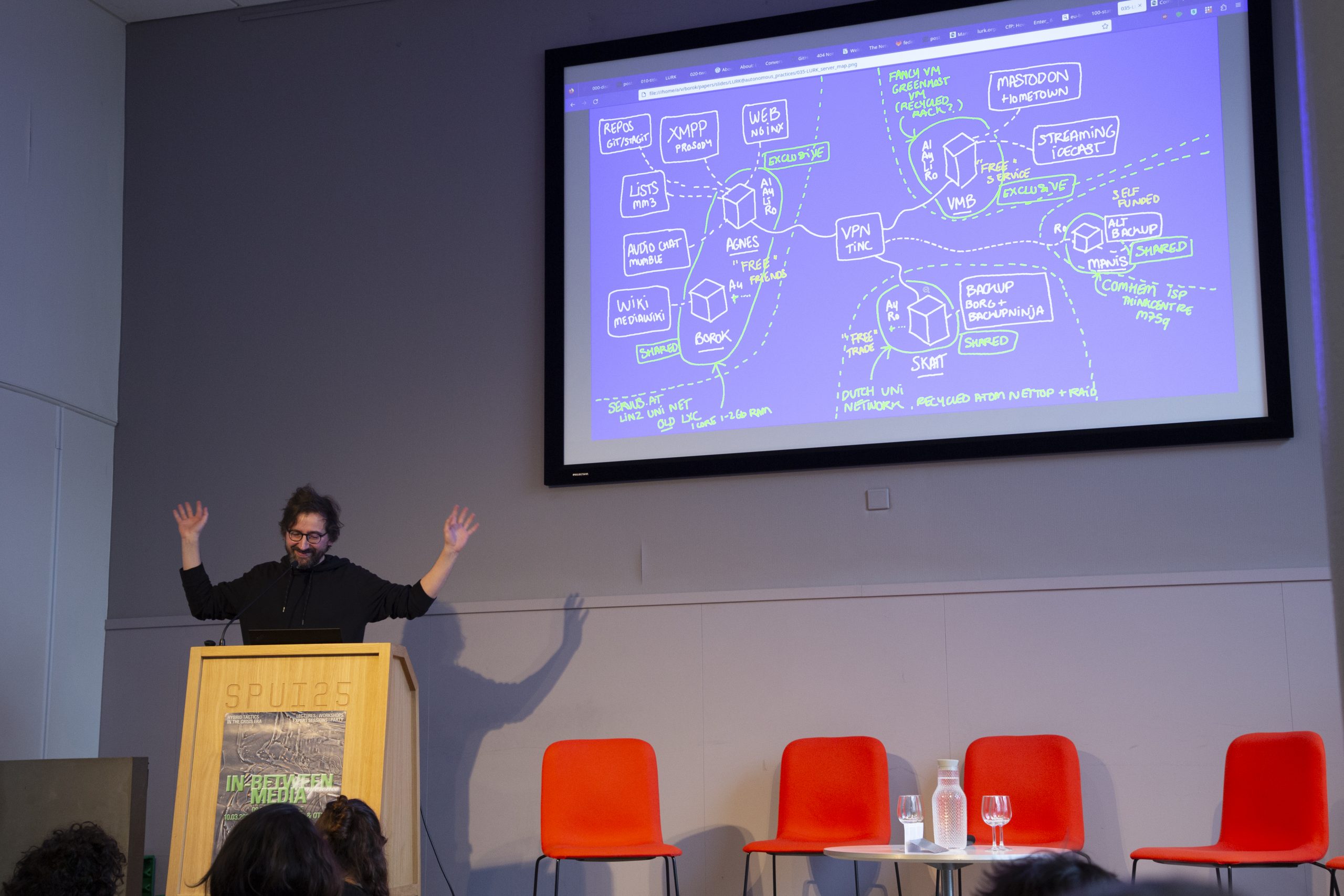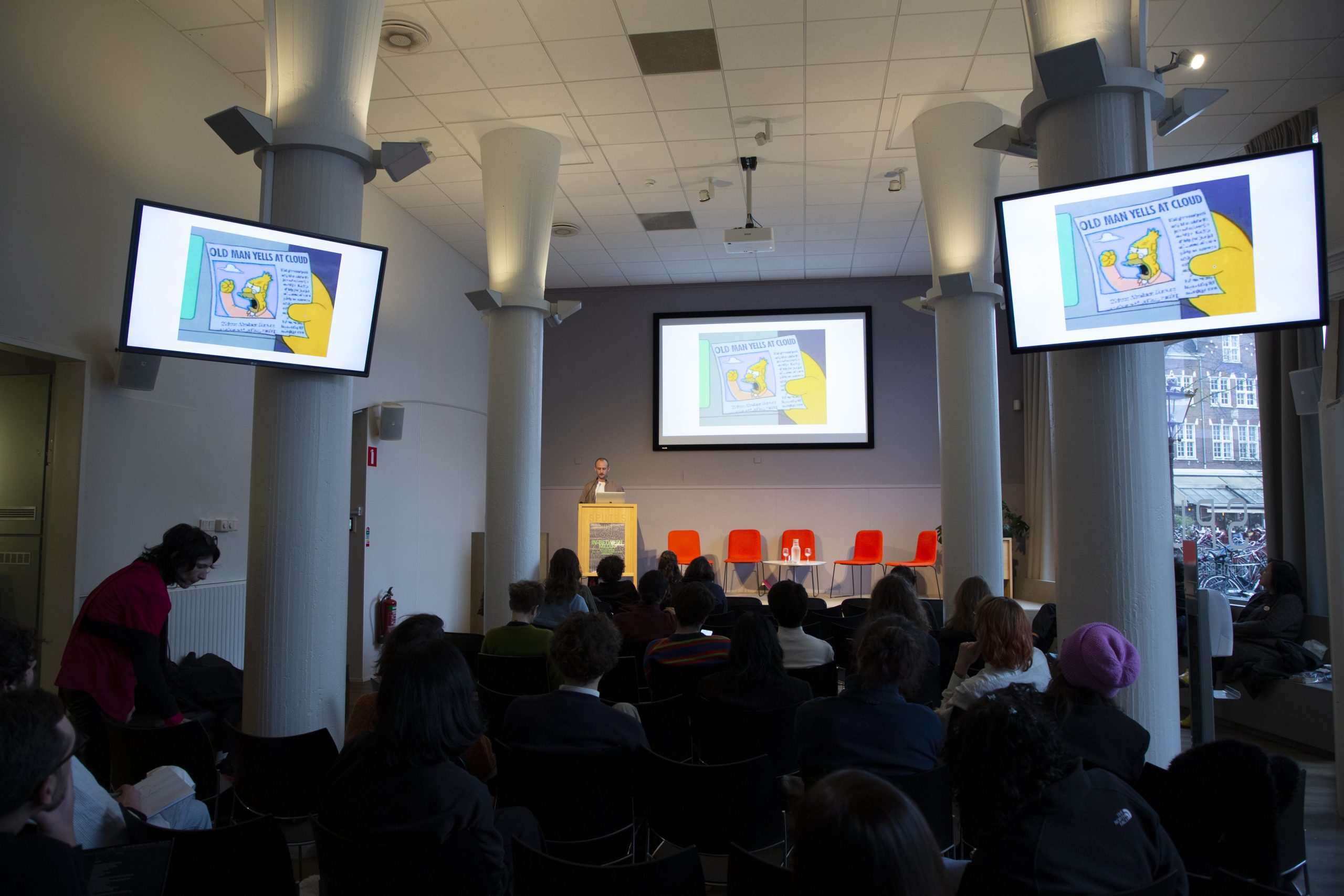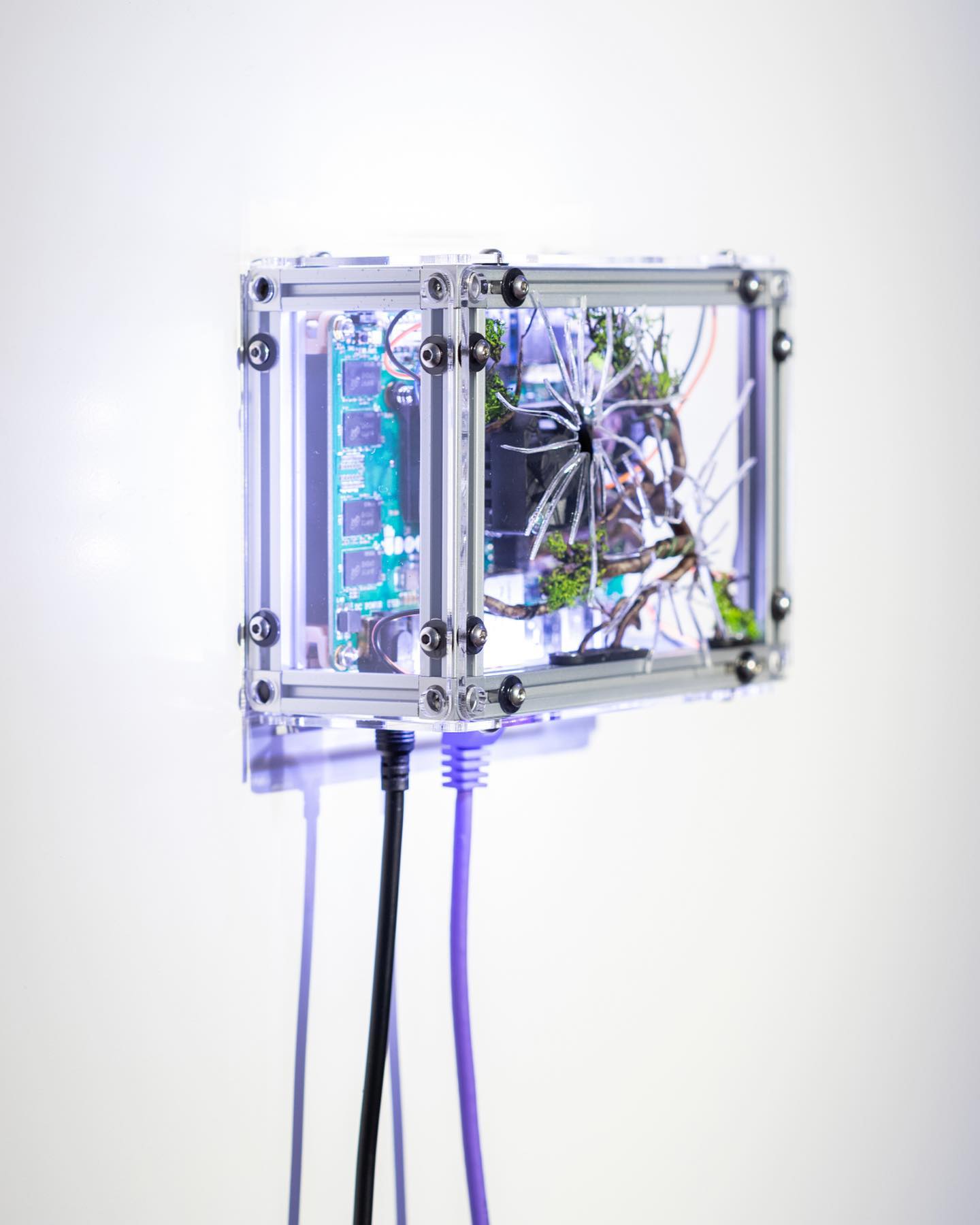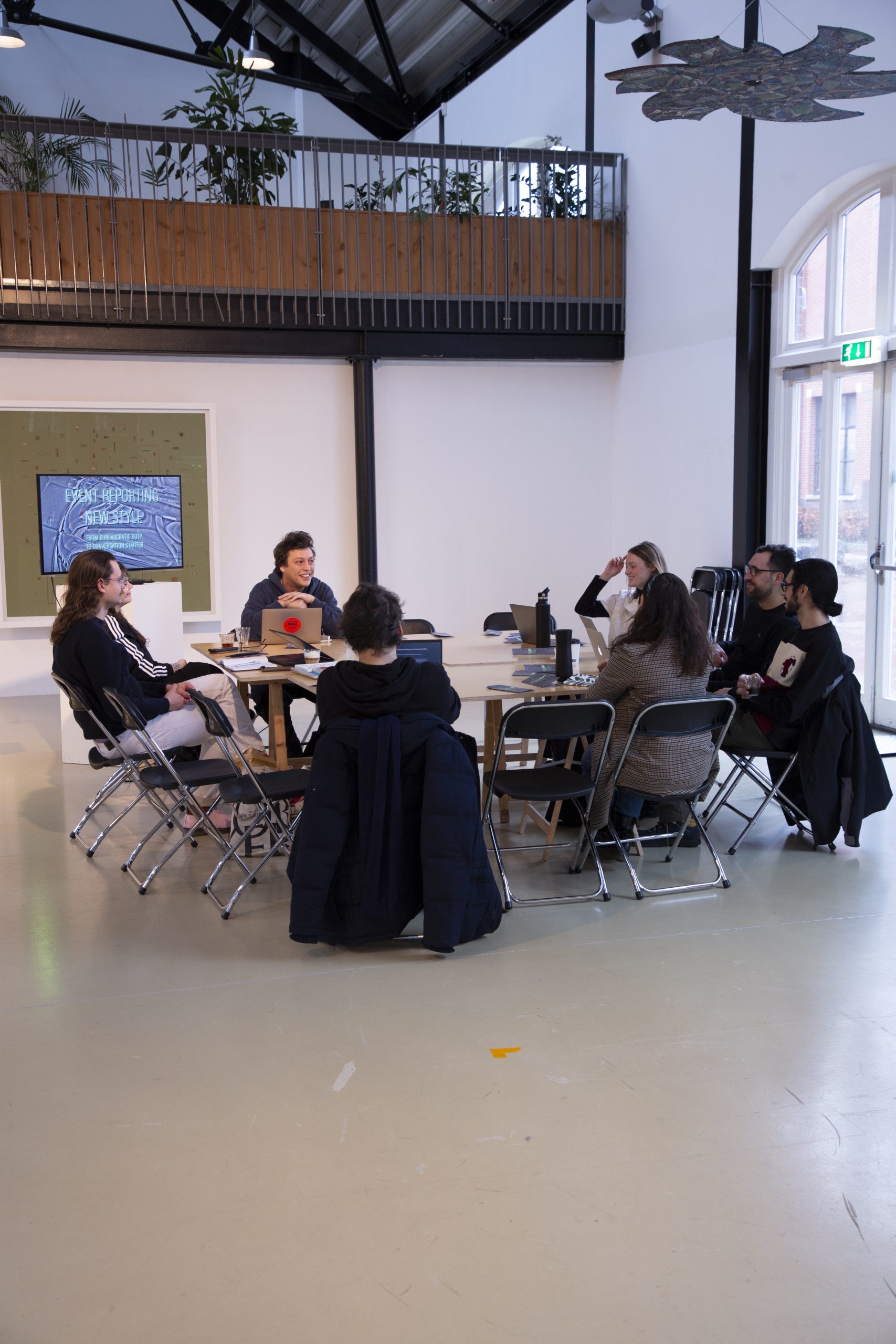Leaving the Dreadful Days Behind
Generally, attending an INC conference means encountering a large variety of perspectives, a parade of presentation formats, and a whole bunch of diverse practices. In-Between Media was no exception. From “theory-scrolling” lecture performances (Jordi Viader Guerrero) to talk-meets-boiler room set (UKRAiNATV), from anti-clouds shamanic rituals (Lukas Engelhardt) to testimonies of visual and invisual citizen journalism (Donatella Della Ratta).
In-Between Media is the first INC conference happening after the Covid outbreak. As Geert Lovink, founder of the institute, put it in the introduction: “the promise of Going Hybrid (the research project from which the conference derives) is that of leaving behind the dreadful days of Teams and Zoom”. We all hope that the project fulfills it. Going Hybrid addresses two main issues: the presence of remote (literally and figuratively) others, and the methods of documentation of events, their afterlife one might say. Urgent developments, such as the Ukraine war, gave new meaning to this research.
Tech That Haunts You Back
Spanish artist Joana Moll opened the day with a keynote on the intrusive nature of cognitive capitalism. A smoothing out of the user experience makes space for the AdTech sector to track the attention of users and create extremely detailed profiles of them. They are then grouped in seemingly absurd cohorts (“the generous dad”, if I remember well) which, however, make sense from the statistical perspective of predicting future behavior. One of the most pervasive tools for tracking and profiling is the cookie. In the project Carbolytics, Moll attempts to calculate the carbon emissions of the massive number of cookies injected by the top 1 million websites.
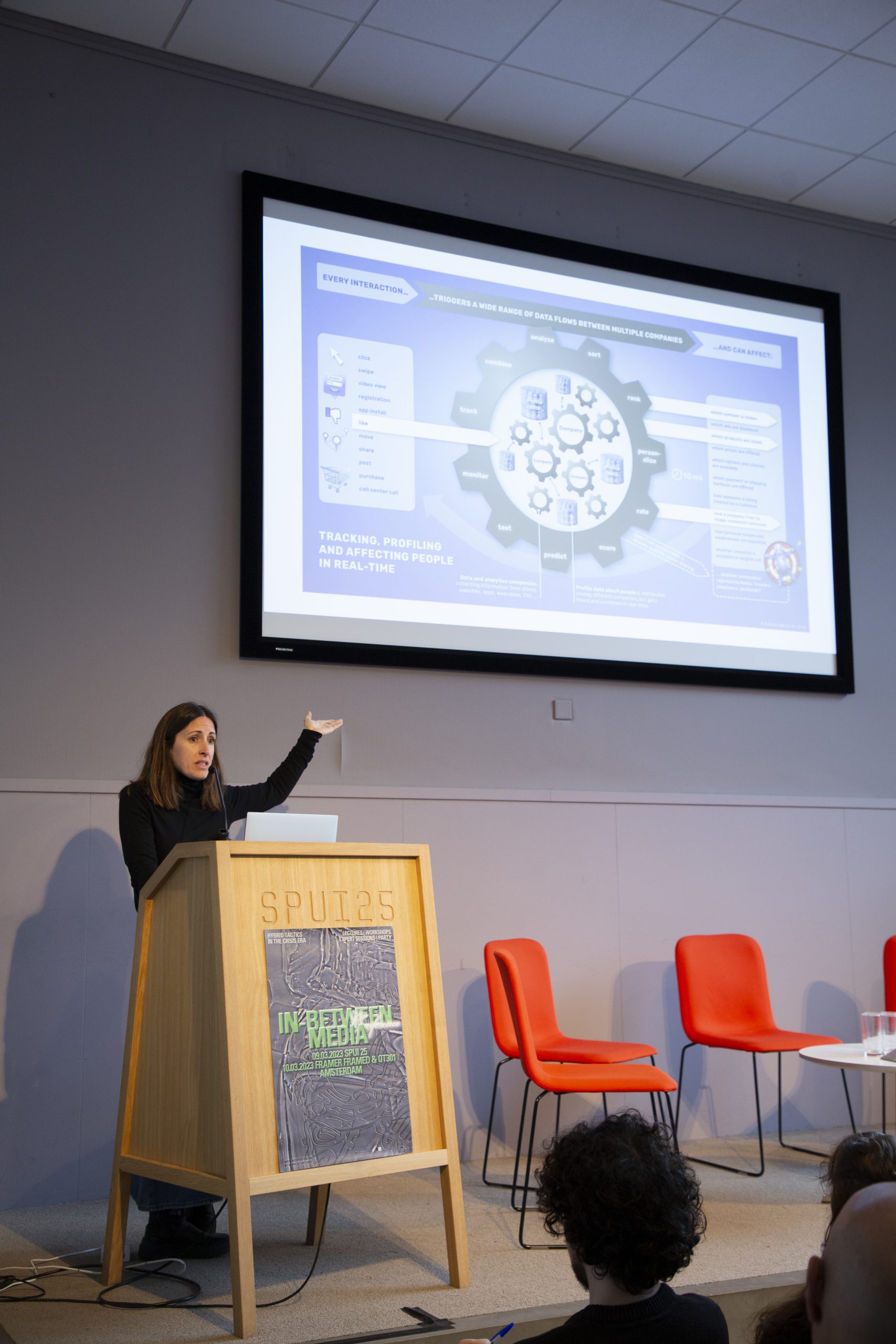 Joana Moll.
Joana Moll.
Moll briefly spoke about the disassociation that might be felt by the engineers and designers who work in AdTech. “How can they not see – the artist wondered – that the tech they build or promote will haunt them back?” An interest discussion arose on the mythological dimension of AdTech. To what extent their profiling claims are real? Moll pointed out that the accuracy of these profile and their adherence to the person behind the user don’t matter much, what matters is their business model – and that is undoubtedly real: “In a near future you will have to fight against those constructed profiles”, Moll concluded.
Pleasure Scroll and TikTok Illiteracy
A whole conference panel was devoted to TikTok. While for some that might feel unsurprising, I think it’s quite a bold curatorial move, given the aura of frivolousness that surrounds this social media in research and academic circles. Tina Kendall delved into the challenges to overcome boredom during the lockdown and to solve the “bored-body problem” of becoming one with the couch. From this point of view, TikTok becomes “a machines that turns boredom into fun”, a boredom which, Kendall points out, is a chronic condition of networked life.
From the left: Dunja Nešović, Tina Kendall, Jordi Viader Guerrero, Agnieszka Wodzińska.
Agnieszka Wodzińska focused on the fast-paced subcultures that follow one another on TikTok: cottagecore, dark academia, and finally corecore, a sort of anti-trend that seems to be mildly critical of the platform’s logic. Wodzińska’s hypothesis is that these trends are “zombie subcultures”, since they manifest merely as simulacra of resistance. One might thinks of Benjamin’s aestheticization of politics, which is a feature of fascism. And that wouldn’t be too far-fetched, given of the elective affinities between cottagecore, the nostalgic “tradwife” trope and far-right ideology.
With his chaotic lecture performance, Jordi Viader Guerrero cheerfully disrupted the panel. Meanwhile, he managed to inject some interesting ideas on the “infinite scroll as a symbolic form”. For Guerrero, the infinite scroll should be addressed in itself, and not just as a means to navigate content. Scrolling is “a pleasure device”, an activity that goes beyond the utilitarian goal of acquiring information.
In general, I felt a certain distance between the researchers and their research subject. Kendall admitted that she had to quickly install TikTok and become familiar with it in order to study how boredom manifests there. It was a bit frustrating to hear descriptions about TikToks without actually watching them. Wodzińska’s chronicle of -cores made me think of the endless list of -isms of the avantgarde. I asked myself: to what extent the study of TikTok differs from the standard practice of average users? After all, the latter are the “core” experts of trends (pun intended). How sustainable is the idea of a scholar catching up with 2-months long waves? Can Kendall’s “TikTok illiteracy” become a tactic to avoid internalizing the platform-oriented analytical lens?
Stuck in the Past
Going Hybrid brought together various collectives to speak and discuss about their streaming practices. Margarita Osipian and Karl Moubarak talked about the collaboration between The Hmm and Hackers & Designers to develop the former’s streaming platform. Moubarak provided a detailed ‘show and tell’ of the website, speaking of the service they use (such as Mux and, previously, Google’s live captioning feature) and their limits. I like the way they frame the question of bringing users into their design. Quoting John Lee Clark, “Who invites who into who’s world?”
Cade Diehm.
The talk of Cade Diehm, founder of the New Design Congress, was fast and furious. He introduced the Gamergate as the infiltration of far-right actors into game culture to “redpill” gamers. The New Design Congress’s antidote to the red pill is called the “para-real”, a third-space between the digital and the physical, the moment that comes before radicalization – a space of possibility, before a certain mediation becomes entrenched. This entrenching has been, according to Diehm, the main limit of tactical media: “since technology is already old when it’s implemented, we criticize the past. In that sense, our work is reactionary. We deal with systems when they’re already entrenched.”
Self-Hosting? In This Economy??
How to go from the short-termism of tactics into the foresight of strategies? Is this even possible? The case of Lurk, a small group of practitioners that provides community services such as of mailing lists, chat and access to the Fediverse, gives an ambiguous feeling of disenchanted hope. As one of its co-founders, Aymeric Mansoux spoke of the history of Lurk. The idea of hosting services was born out of a frustration towards the critical tech community. The problem was that they had apparently given up on the infrastructural issue and started focusing on the user condition within closed platforms instead. Lurk believed on the contrar that dealing with infrastructure was still important, and new energy coming from the Fediverse proved they were right. At that point, the Lurk people were both “excited and exhausted”. But Mansoux’s point is that hosting independent services in 2020 is not the same than doing it in the 2000’s: the cost of life has dramatically increased while the fees of workshops (which allow for much maintenance and development work) stayed the same. The danger, according to Aymeric, is to present independent self-hosting projects in an idealized way, focusing too much on their cultural value and too little on their economic dimension. In other words, the risk is to trick good-willed artists, designers and hackers into “a pyramid scheme of free labor”. Fun times.
Aymeric Mansoux.
Lukas Engelhardt focused a bit more on the bright side of self-hosting and its potential to be the network analog of squatting (he pointed out that in the Netherlands the budget cuts to culture more or less coincide with the squat ban). Engelhardt sees the server as a temporary autonomous zone which prefiguratively shows how it is “the status quo that is unsustainable” and not its alternatives. The digital TAZ doesn’t need to be boring or ugly, and in fact the servers crafted by Lukas are beautiful sculptural objects which combine lights and 3D-printed elements to convey a novel symbolism and incarnate communal metaphors.
Lukas Engelhardt.
A server built by Lukas Engelhardt. Photo: Katarina Juričić.
Reporting the Reporting
As a research project, Going Hybrid is tackling the very issue of event reporting. Being a reporter (or, more precisely, a blogger) of the event, I feel like in Inception. The problem with reports identified by the Going Hybrid folks is that it often feels like a bureaucratic requirement, something that nobody wants to write and nobody want to read. In fact report-writing is often outsourced to students or interns. The result: dry, uninspired texts chronologically organized (“x said this, y said that”).
Moving from this premise, Sepp Eckenhaussen from INC and Gijs De Heij from OSP, speaking on behalf of the consortium’s team, defined a series of needs for a report-writing workflow. It has to be fast and flexible, it should diminish the workload of reporters and ideally de-center the idea of the author towards a non-linear aggregation of perspectives. The current prototype of this workflow is based on an Etherpad document with a series of phases and instructions. The reporter writes their notes, turn them into paragraphs and then cuts and paste bits according to tags, such as questions, opinions, audience moods, etc.
Testing the prototype during a work session was a good opportunity to reflect on the role of the reporter (e.g. are they a bored intern or a professional writer?), the division of labor when it comes to writing and editing, and, as Sepp beautifully put it, “the need to expand and not diminish the reporter’s craft”.
Photos by Sonia González Diez.
Also published on Medium.


